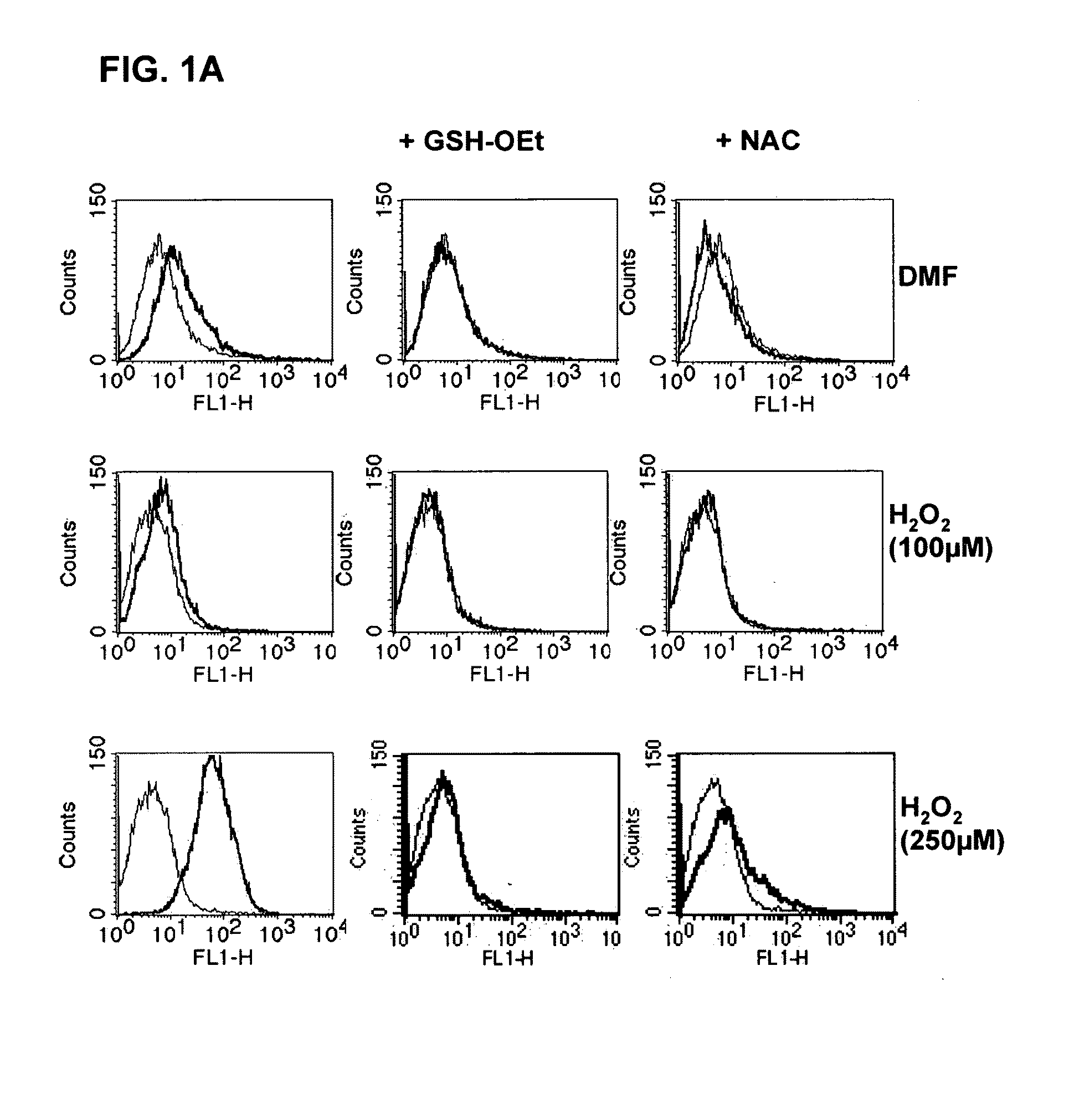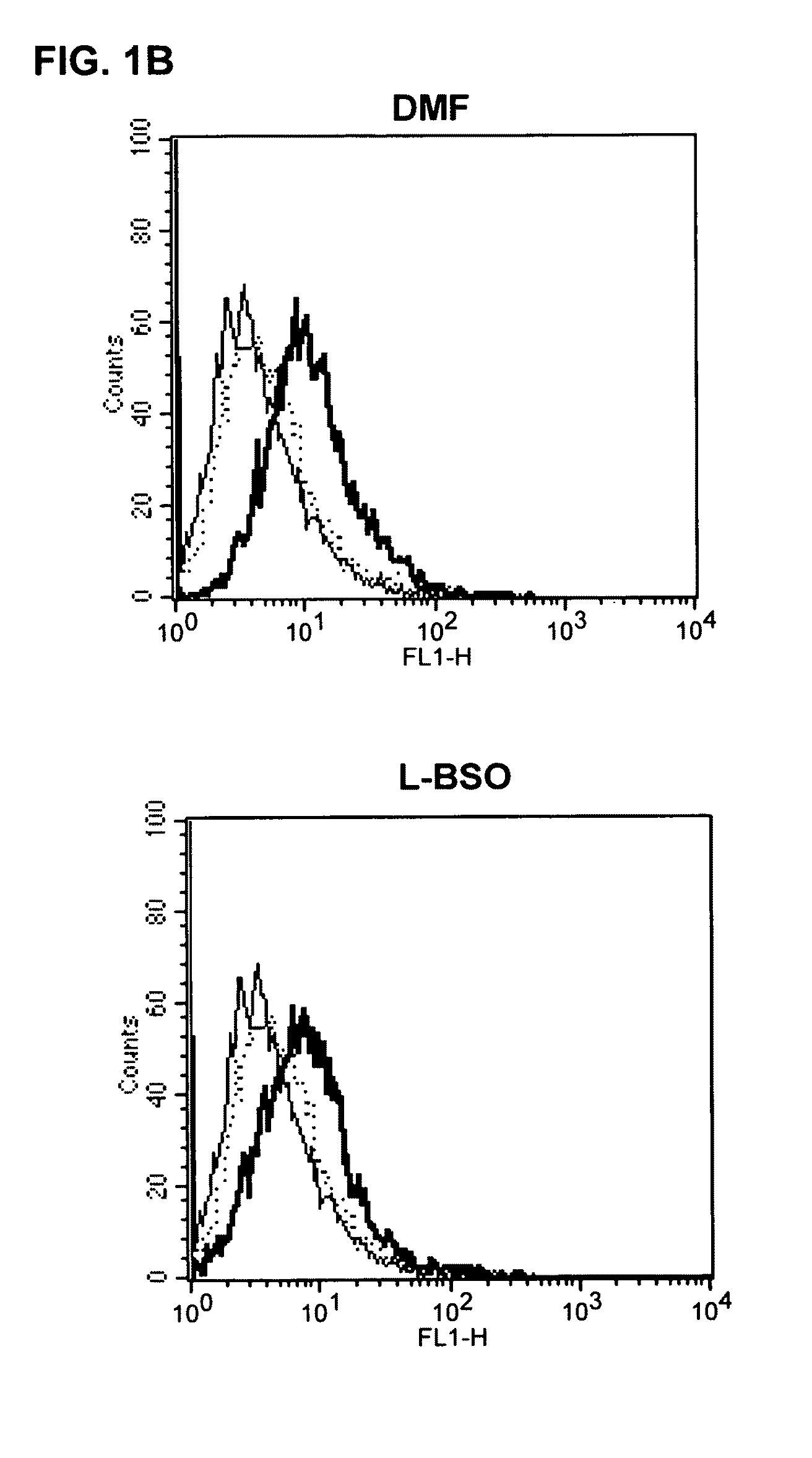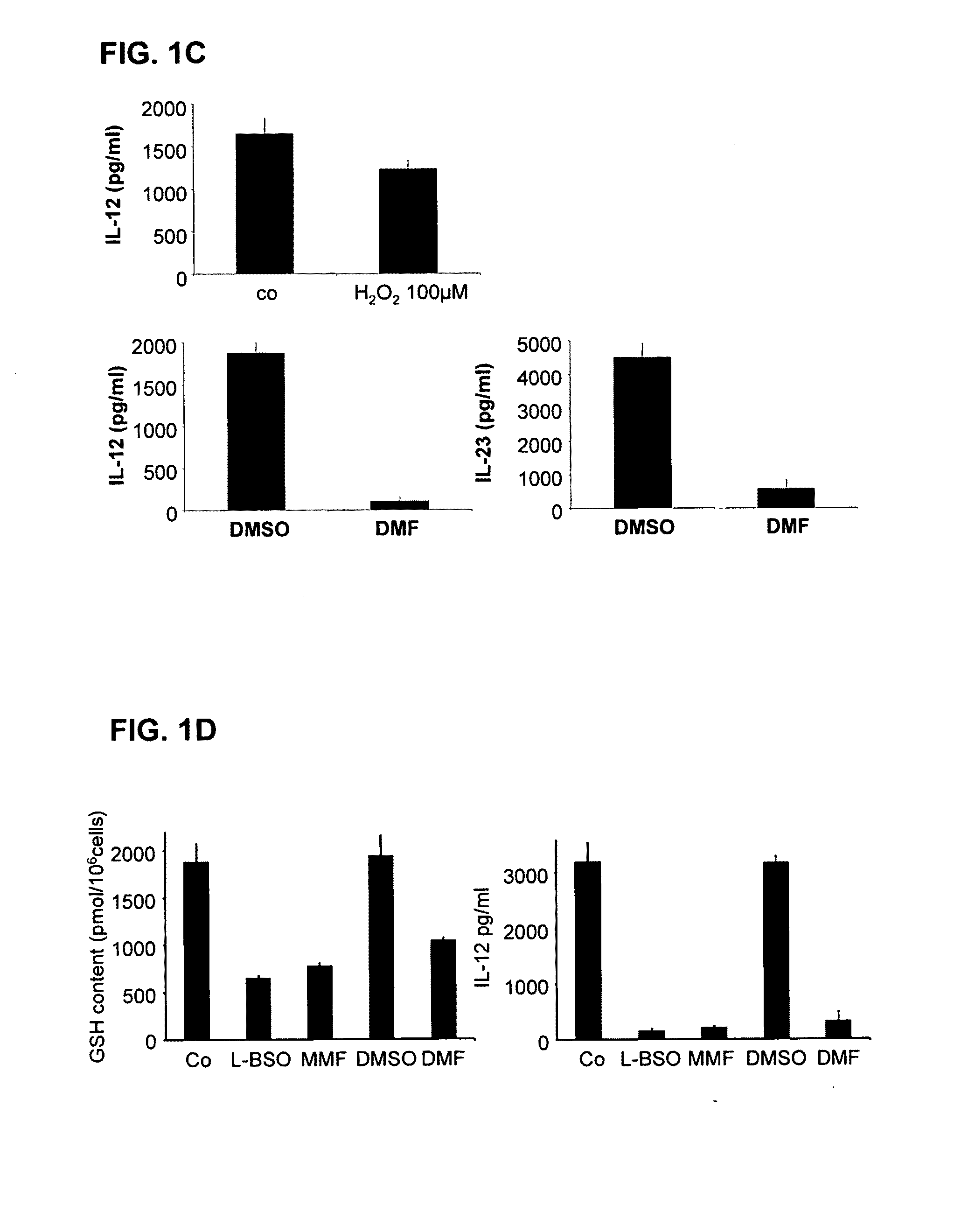Method and substances for treating t-cell mediated autoimmune diseases
a technology of autoimmune diseases and substances, applied in the field of methods and substances for treating t-cellmediated autoimmune diseases, to achieve the effects of detecting a genetic susceptibility, reducing the risk of intracellular cell damage, and reducing the risk of roi
- Summary
- Abstract
- Description
- Claims
- Application Information
AI Technical Summary
Benefits of technology
Problems solved by technology
Method used
Image
Examples
example i
1. Material and Methods
[0076]1.1 Experimental Animals
[0077]Female SJL mice, C57BL / 6, OVA transgenic DO11.10-BALB / c mice and BALB / c mice were either bred or bought (Charles River Laboratories, Harlan) and kept under specific pathogen-free conditions. The animal experiments were officially approved.
[0078]1.2
[0079]For the measurement of reactive oxygen species (ROS) in DC and APC, the fluorescent dye 2′,7′ dichlorofluorescein (H2 DCFDA, Molecular Probes, Eugene, USA) was used. 5×105 DC were preincubated in 1 ml of RPMI medium (without mercaptoethanol) for 60 mins at 37° C. in the incubator with 1% DMSO or 10 μg / ml DMF+ / −NAC (1 mM) or GSX (1 mM). After this preincubation, 1 μM / ml H2 DCFDA was added and the cells incubated for a further 30 mins at 37° C. Within one hour, the fluorescence produced was detected using flow cytometry (FL1).
[0080]1.3 Glutathione Determination
[0081]Cellular GSH and GSSG were determined in micro-titer plate assays using colorimetric methods. The cellular GHS co...
example ii
[0107]For the testing of the potential of pharmaceutical substances to lower the glutathione content of cells, the following procedure was carried out: cells (antigen-presenting cells or dendritic cells) are incubated with different concentrations of the given pharmaceutical substance to be tested. Then, after an incubation time of 1 hr, 2 hrs, 24 hrs or 48 hrs, the glutathione content of the cells is determined in comparison to control cells. For this, after the incubation time, the cells are lysed with 1% sulfosalicylic acid (SSA) and incubated on ice. The lysate is then high-speed centrifuged and the supernatant used for the GSH measurement, and the sediment prepared for the protein measurement after Lowry.
[0108]The samples and the GSH standard were diluted in a microtiter plate and the assay reaction started by addition of a reaction mix which contains glutathione reductase. The composition of the reaction mix was as follows: 92.7 μl GSH buffer (0.1 M sodium phosphate, Na2HPO4 a...
example iii
[0110]For testing the potential of pharmaceutical substances to induce the ROS, the following procedure was developed: for the measurement of reactive oxygen species (ROS) in cells, the fluorescent dye 2′,7′ dichlorofluorescein (H2 DCFDA) is used. The absorption spectrum of the substance is 492-495 nm and the emission spectrum lies in the range between 517-527 nm. On induction of cell stress, e.g., by the administration of ROS-causing reagents, oxidation of the H2 DCFDA to DCFDA+H2 occurs. The fluorescence arising as a result can be detected using flow cytometry (FL1).
PUM
| Property | Measurement | Unit |
|---|---|---|
| Dimensionless property | aaaaa | aaaaa |
| Dimensionless property | aaaaa | aaaaa |
| Concentration | aaaaa | aaaaa |
Abstract
Description
Claims
Application Information
 Login to View More
Login to View More - R&D
- Intellectual Property
- Life Sciences
- Materials
- Tech Scout
- Unparalleled Data Quality
- Higher Quality Content
- 60% Fewer Hallucinations
Browse by: Latest US Patents, China's latest patents, Technical Efficacy Thesaurus, Application Domain, Technology Topic, Popular Technical Reports.
© 2025 PatSnap. All rights reserved.Legal|Privacy policy|Modern Slavery Act Transparency Statement|Sitemap|About US| Contact US: help@patsnap.com



